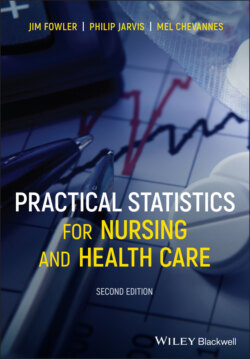Читать книгу Practical Statistics for Nursing and Health Care - Jim Fowler - Страница 25
2.13 Statistics and Parameters
ОглавлениеMeasures that describe a variable of a sample are called statistics. It is from the sample statistics that the parameters of a population are estimated. Thus, the average weight of a sample of new‐born male babies is the statistic that is used to estimate the average weight (parameter) of a population of new‐born male babies. An easy way to remember this is: Statistics is to sample as parameter is to population.
Sometimes populations appear to be rather abstract or hypothetical concepts, in which case their parameters are also hypothetical. We can calculate an ‘average temperature’ from a sample of 10 observations collected from a patient over a day. What exactly is the parameter that this statistic is estimating? It is the hypothetical ‘population’ of all temperature observations that could be made during the observation period.
In estimating a population parameter from a sample statistic, the number of observations in a sample can be critical. Some statistical methods depend upon a minimum number of sampling units, and where this is the case, it should be borne in mind before commencing your study. While it is true that larger samples will invariably result in greater statistical confidence, there is nevertheless a ‘diminishing returns’ effect. In many cases the time, effort and expense involved in collecting very large samples might be better spent in extending the study in other directions. We offer guidance as to what constitutes a suitable sample size for each statistical technique as it arises.
